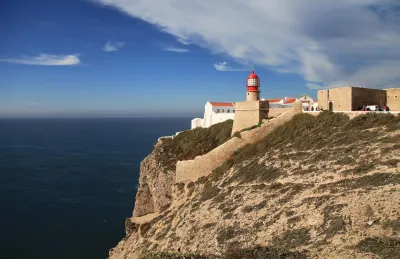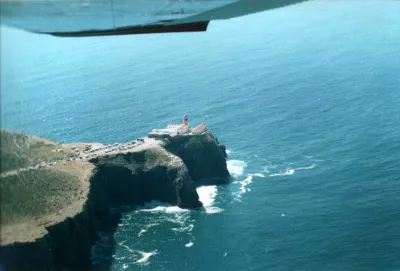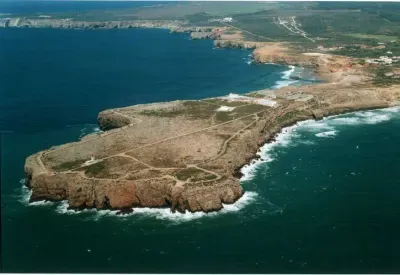
Cabo de São Vicente Barni1
Cabo Sao Vicente Lighthouse 
Cape St. Vincent
Located a few kilometres northwest of Sagres is the historic Cabo de São Vicente (Cape of Saint Vincent) is a craggy, windswept headland at the spot which claims to be the most south-westerly point of mainland Europe. Until the end of the 14th century many believed this place to be the end of the world - come here on the right day and you might think they had a point. The Romans called this place the Sacred Promontory, and if you stand here at sunset, it can be easy to see why - the sun appears unusually large as it descends over the seemingly endless sea.
Henry the Navigator is said to have lived here, and the spot is thought to have played a significant role in the discovery of “New Worlds” during the 15th century Age of Discovery.
The headland gets its name from St Vicente (Vincent) of Saragossa, who was said to have been tortured by having salt rubbed into wounds and then burnt alive around 304A.D. His remains were reputedly brought ashore here and a shrine was built, supposedly guarded by ravens. In the 12th century these relics (accompanied by the ravens) were moved to Lisbon and Vicente is one of Lisbon’s patron saints. The last of the ravens around Lisbon cathedral is believed to have died in 1978.
The ruins of a monastery, damaged by the 1755 earthquake, can still be seen here. Much of this was incorporated into a Franciscan convent in the 16th century, which in turn became part of what is now the lighthouse. This iconic working lighthouse towers above the cliffs and can be seen from 60 miles out at sea, making it one of the most powerful in Portugal. There is a small museum and gift-shop attached to the lighthouse.
The waters around the cape are rich in marine wildlife, and there are some good opportunities for birdwatchers here, as well as occasional sightings of sea otters. Something not to be missed if you’re in the area and the weather is not too stormy is the opportunity to linger here to witness the spectacular sunset. Just before the sun goes down, it can get pretty crowded in the car park, so make sure you arrive in plenty of time. Then stand looking out over the cliffs towards the vast expanse of ocean and you’ll truly appreciate the splendour of this remarkable spot.
Address
Cabo de São VicenteVila do BispoSagres8650-370Attraction type

Sagres travel guide »
Although Sagres is on the Algarve it doesn't have the same over-developed holiday town feel of some of those towns further east. Situated within a few kilometres of Europe's most south western point, Cape St. Vincent, the town has a rather windswept, remote feel about it.The town itself is pleasant enough in places, with an attractive square, but there is little of historical or architectural…